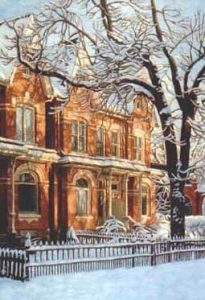Brief History of Cabbagetown
OUR STORY IN A NUTSHELL
Cabbagetown is the epithet used by Toronto's prosperous British residents offended by the use of front gardens to grow cabbages and other vegetables by the hundreds of Irish families who had fled famine in Ireland in the 1840s. The area, at that time, was a mix of prosperous streets, middle class houses and workers enclaves, but well before the Depression it slid into decline. Then, in the 1970s and 1980s this large stock of decayed, but largely untouched, Victorian housing was discovered by inner city pioneers who actively campaigned to prevent further destruction of the historic architecture, and the area was gradually restored. Today it is a village within the city. Cabbagetown is a physically beautiful, culturally active, mixed-income community. A walk through the area yields many surprises - secluded alleys, converted workshops and tiny workers cottages share streets with grand homes and coach houses. Much of the area has been designated a Heritage Conservation District with the benefits and responsibilities that designation entails.
 Painting by Lisa Crouch
Painting by Lisa Crouch
CABBAGETOWN TIMELINE
Cabbagetown sits on what has been the ancestral land of various indigenous peoples who would hunt, fish, trade, and harvest wild rice along the Don River just east and down the valley from today’s Cabbagetown. As well, migrating ducks used to frequent the area in the spring and the fall. As a result, there were remains of native camps and artifacts found in the area, including pottery fragments. The age and exact location of these sites are no longer known. With the channeling of the Don River in the 1890s, subsequent flooding over the past hundred years, and the construction of the Don Valley Parkway system in the 1950-60s, site locations would now be impossible to identify. [Source: First Story Toronto: Exploring the Indigenous History of Toronto]
When Lieutenant-Governor John Graves Simcoe laid out the Town of York in 1793, a series lots were given to the Upper Canada elite. The first lot west of the Don River and encompassing a large part of today’s Cabbagetown was assigned to Simcoe’s son Francis (aka Frank) who was 3-years old at the time. The Simcoe family built the first house in the area, a log cabin on a bluff overlooking the Don near what is now Bloor Street, and called this cabin Castle Frank in honour of their son. Simcoe also had a path cut through the woods from the first Upper Canada Parliament Buildings, near what is today Front and Parliament, all the way to the cabin. This path became Parliament Street.
Cabbagetown was first established in the 1840s, just outside of the newly created city of Toronto, as a northeast “suburb”. Parliament was the main north south road and Winchester Street the primary east west route in the area. For a time, Winchester Street continued east down the Don River valley, crossing over what was called Playter’s Bridge (later known as the Winchester Street Bridge) and becoming Winchester Drive east of the river. This connected with Danforth Avenue, and provided a link between the developing areas east of the Don (now Riverdale) and the growing city of Toronto. The bridge was rebuilt several times as the raging Don River, swollen by spring thaws, often swept it away. It was eventually demolished when the Prince of Wales Viaduct opened in the late 1910s making it redundant.
It was also around this time that Cabbagetown developed as a residential area. When the Irish Potato Famine brought a huge influx of Irish immigrants to Toronto in the 1840s and 1850s, the city’s population began to spread eastward to the Don River and north. Most of the houses built south of Gerrard Street were small cottages, home to the workers in the many industries that were established along the river: Gooderham & Worts Distillery, William Davies Company (pork processing and packing), Sheet Metal Products, several breweries, etc. In Cabbagetown, the Lamb’s Glue and Blacking Manufactory stood in what is now Wellesley Park. As well the Toronto General Hospital opened in the area, also providing a source of employment.
Times were tough for many of these immigrants and to help provide food, residents would grow vegetables, including cabbages, in their front yards, resulting in the area’s nickname of Cabbagetown. Cabbages were very popular as they grew in the area’s soil, kept well, and were versatile in the kitchen. The area south of Gerrard is actually the original Cabbagetown.
North of Gerrard St. the area was more mixed, with houses belonging to both blue and white collar workers and even some wealthy company owners in the large houses along Carlton Street. Many of the homes were built in what is now considered the quintessential Cabbagetown style. Tall, thin, asymmetrical and often semi-detached, these Gothic Revival style houses featured protruding bay windows and a pointed front gable, often decorated with gingerbread.
Land in Cabbagetown was also set aside for public space. Two cemeteries were opened in the area, St. James Cemetery, in 1844, and the Necropolis Cemetery, in 1850. These are the final resting places for several important figures in Canadian history, including George Brown, Robert Baldwin and William Lyon Mackenzie.
Starting in 1899, part of Riverdale Park West became the home of Toronto’s first zoo with lions, bears and monkeys. The zoo closed in 1974 and moved to Scarborough. A heritage farm opened in 1978, and is today home to cows, horses, pigs and the ever popular heritage chickens.
Cabbagetown’s prosperity peaked in the late 19th century (the majority of Cabbagetown’s stock of homes was built in the 1880s and 1890s) and early 20th century. The First World War had a devastating impact on the area and its population, and the area slid into decline even before the 1930s Depression drastically changed the face of Cabbagetown. As jobs became scarce, people fell on hard times. Many were forced to move away and families were split up. Many of the homes were subdivided into apartments or what were often sketchy rooming houses, and forgotten by city planners. It was this period that prompted author Hugh Garner to call Cabbagetown “the largest Anglo-Saxon slum In North America”.
The first threat came in the 1950s, but local opposition prevented several grand Victorian Carlton Street mansions from being sacrificed to a Don Valley Parkway exit. Developers also lurked.
In the 1960s, developers began to buy up properties, hoping to raze the area and build high rise apartments (as actually happened in the neighbouring St. James Town area). However, when a reform Council under Mayor David Crombie was elected and imposed a height by-law, the developers began to sell off these properties. This large stock of decayed, but largely untouched, Victorian housing was discovered by realtors and renovators who, attracted by low prices and the area’s history, began to move in and restore these historic houses. Thus began a process that today makes Cabbagetown one of the most beautiful and sought-after residential areas of Toronto.
In 1987, to prevent any future threat of destruction, a group of concerned citizens created the Cabbagetown Preservation Association (CPA) to fight to preserve the area’s architectural integrity and historic character, giving us the beautiful community we see today.
In the early 2000s, following the CPA’s efforts, the City of Toronto designated Cabbagetown as a heritage conservation district (HCD). Today, much of the area has been designated as an HCD with the benefits and responsibilities that it carries. As described on the Cabbagetown HCD Committee website: “HCD designation allows a municipality to protect and enhance the special characteristics of a designated area, as defined by local property owners themselves. The special characteristics generally include the overall look and quality of buildings, landscapes and open spaces, as seen together from the street. (HCD designation does not in any way affect the interior or the back or sides (except where a corner lot) of buildings in the HCD.)”
If it were not for the dedication of local residents, Cabbagetown might have become a forest of high-rises, similar to St. Jamestown. The passion behind the activism to protect the architectural integrity and overall “specialness” of Cabbagetown would eventually lead to the creation of the CPA. Intense local efforts culminated in the designation of most of Cabbagetown as a “heritage conservation district” (HCD).
Cabbagetown is unique in Canada; its fine representation of architectural and urban design styles, construction technologies, building types gardens and landscapes surround residents and visitors with a sense of history and locality. This variety of architectural styles, massing scale, height, proportion, materials, colours, textures, rhythm, silhouette, siting, landscape design and spatial and structural elements create a rare “living museum”. There are miles of virtually unbroken Victorian streetscapes, two heritage cemeteries, the Riverdale Farm (yes, a working heritage farm in downtown Toronto), Wellesley Park, Riverdale Park West and a ‘sublime’ view across the Don Valley flats and the Don River. The neighbourhood is rich in local and national history. It has been home to a large number of notable people who contributed to major social and political movements and in variety of disciplines who have left a distinct social imprint locally, nationally and globally. These include, to name just a few: Toller Cranston, Betty Oliphant, Walter Huston, Ernest MacMillan, Al Purdy, Gordon Sinclair, Richard Bradshaw, Rowena Hume, Albert Jackson, Patricia Watson, Walter Seymour Allward, Margaret Hyndman. Visit Cabbagetown People for details of these former residents and many others who have led remarkable lives. Canada’s social history is also displayed through the compact Victorian town layout, the later addition of narrow driveways to new homes of the 1920’s “streetcar suburb”, and Spruce Court’s garden city design.
The old epithet has become the name of a desired neighbourhood, and many Cabbagetowners proudly display the Cabbagetown flag - a green cabbage on a white background.
Cabbagetown is truly an enchanting area worth discovering.
